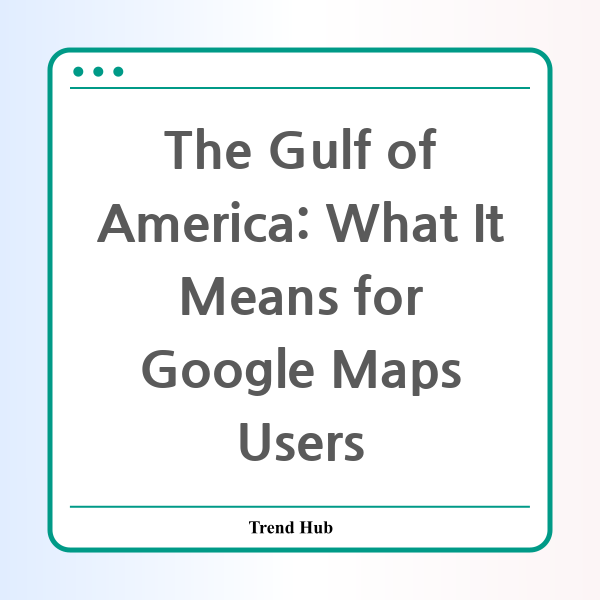* This website participates in the Amazon Affiliate Program and earns from qualifying purchases.

What does the renaming of the Gulf of Mexico to the Gulf of America mean for you? This change has sent ripples through both the U.S. and Mexico, affecting how millions will perceive this iconic body of water. As of February 2025, the U.S. Geographic Names Information System (GNIS) officially changed the name from the Gulf of Mexico to the Gulf of America for American users on platforms like Google Maps. But how does this affect users in different regions, and what are the implications of such a significant shift?
With the change rolling out, users in the United States will now see the name "Gulf of America" while browsing Google Maps. Conversely, Google Maps users in Mexico will still view it as the "Gulf of Mexico." For users located outside these two countries, both names will be displayed, leading to potential confusion or misinterpretation.
This geographic renaming comes on the heels of a presidential proclamation by Donald Trump, who declared February 9 as "Gulf of America Day." This act not only aims to boost national pride but also has implications for how maps and geographic identifiers are set in digital platforms like Google and Apple Maps. Just days after this proclamation, Apple followed suit, updating its maps to reflect the new nomenclature.
Now, many users are left wondering: What prompted this change, and why is it facing backlash? Mexican officials, led by President Claudia Sheinbaum, have voiced strong objections, arguing that the Gulf of Mexico is a long-standing name recognized internationally. Sheinbaum has stated that if Google fails to revert the name, Mexico might consider filing a civil suit against the tech giant. This political and cultural tension highlights the importance of geographical names and their implications on national identity.
The naming of geographic features plays a critical role in how nations view their landscapes and histories. A body of water that has been referred to as the Gulf of Mexico for hundreds of years now faces a potential rebranding that could alter its perception globally. Mexican authorities maintain that the Gulf retains its historical and cultural significance under its original name.
As the name change is implemented on Google Maps and other platforms, users in the U.S. navigating the app may notice this alteration affecting their search results, navigation prompts, and local recommendations. The change in nomenclature could even pose challenges for businesses and tourism in the region, as brand identities become entwined with geographical references.
In light of this significant change, here's a quick summary of what to expect in terms of Google Maps viewing:
- In the United States: Users will see "Gulf of America" on Google Maps.
- In Mexico: Users will continue to see "Gulf of Mexico."
- Outside of these two nations: Users will see both names displayed.
This situation showcases the complexities of mapping technology and how political decisions can reverberate throughout public perception and geopolitics. As Google Maps and other applications adapt to these changes, it’s crucial for users to stay informed about the implications of such name changes, especially for those relying on these technological platforms for navigation and information.
As the story develops, it will be interesting to see how Google responds to complaints from Mexico and how this affects international relations regarding geographic naming practices. Stay tuned for updates as the world watches how digital platforms navigate these uncharted waters.
* This website participates in the Amazon Affiliate Program and earns from qualifying purchases.